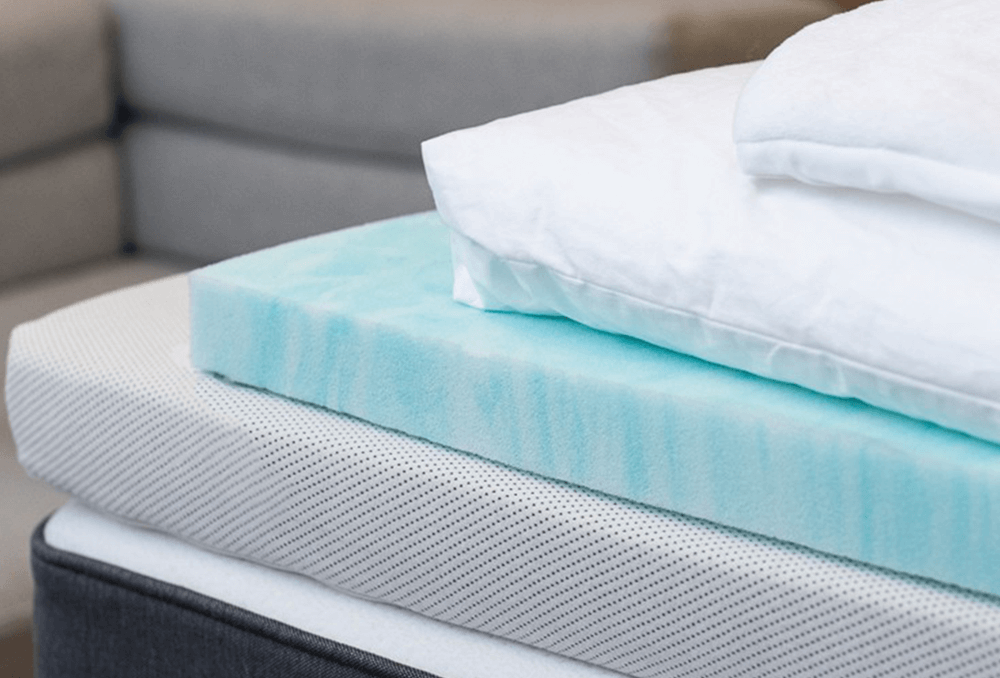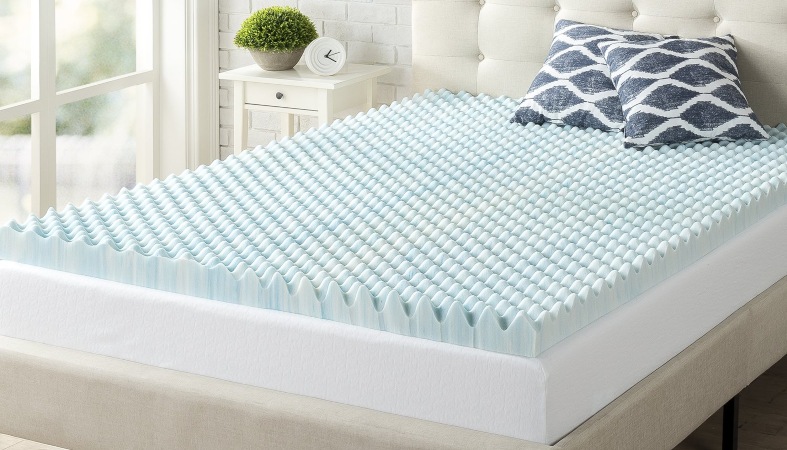
A Comprehensive Guide to Different Types of Foam Mattresses
As sleep technology continues to advance, more and more people are turning to foam mattresses
As sleep technology continues to advance, more and more people are turning to foam mattresses for their superior comfort and support needs. The market is teeming with products that appeal to varied interests and demands, from conventional memory foam to eco-friendly latex types. In this detailed overview, we will explore foam mattresses, their unique features, advantages, and possible disadvantages.
Understanding Foam Mattresses

A basic understanding of foam mattresses is necessary before moving on to the many varieties. The several types of foam used to make these mattresses each have their own special qualities that improve the quality of sleep you get. The density and composition of the foam layers in a foam mattress are what actually give support and cushioning, as opposed to the standard innerspring mattress.
The capacity of foam mattresses to mold to the shape of the body is a major selling factor, since it helps with pressure point relief and encourages healthy spinal alignment. The motion isolation characteristics of many foam mattresses are also well-known, helping to keep companion movements to a minimum.
Types of Foam Mattresses
Now, let’s explore the different types of foam mattresses available in the market:
1. Memory Foam Mattresses

Most people probably think of memory foam, which is another name for viscoelastic foam, when they think of a foam mattress. Famous for its shape-retaining properties that disperse weight and alleviate pressure spots, memory foam was developed by NASA in the 1970s.
A memory foam mattress conforms to your every curve when you lay on it because your body heat expands and contracts the foam. The memory foam slowly returns to its initial shape whenever you change positions or get up, so you’ll have constant support all night long.
A lot of people say that memory foam mattresses are great for couples or people who have a fidgety bedmate because of how well they isolate motion. But, for some, memory foam can trap heat, which can be an issue in hot weather or for people who tend to sleep hot during the night.
2. Latex Foam Mattresses

An alternative to memory foam, latex foam mattresses provide a one-of-a-kind blend of softness and bounce. Latex foam, which is made from the sap of rubber plants, is great for people who have allergies or sensitivities since it is hypoallergenic, resistant to dust mites, and antibacterial.
With its rapid response time, latex foam offers a more bouncy and resilient sensation than memory foam, which adapts more slowly. The “stuck” feeling that some people get with memory foam can be reduced by this responsiveness.
Dunlop and Talalay are the two main types of latex foam mattresses. While Talalay latex is softer and more breathable, Dunlop latex is denser and more durable. Both varieties are great for different sorts of sleepers since they relieve pressure and provide support.
3. Polyurethane Foam Mattresses

Polyurethane foam, or poly-foam as it’s more often known, is a less expensive substitute for latex and memory foam. Mattresses, furniture, and car interiors are just a few of the many places you might find this synthetic foam.
One of the best things about poly-foam mattresses is how versatile and inexpensive they are. Different densities are available, so you can find supportive base layers made of high-density foam or softer comfort layers made of low-density foam.
A poly-foam mattress will still give adequate support and cushioning, but it won’t have the same shaping capabilities or pressure relief as a latex or memory foam mattress. Also, those who get hot when sleeping may find that they are more breathable than memory foam.
4. Gel-Infused Foam Mattresses

One recent development in the foam mattress market is gel-infused models. To keep you cool while you sleep, these mattresses have layers of gel-infused foam or gel beads.
Unlike conventional memory foam mattresses, which can trap heat, this one uses gel to absorb and release your body’s natural heat. Because of this quality, gel-infused foam mattresses are a good choice for people who become hot when sleeping or who reside in warmer regions.
The cooling powers of gel-infused foam mattresses are great, but the contouring and pressure-relieving qualities of memory foam are still there, so you can sleep well on top of them.
5. Hybrid Foam Mattresses

By combining an innerspring coil system with numerous layers of foam, hybrid foam mattresses bring the greatest features of both types of mattresses together. A pocketed coil base layer provides support, while a layer or layers of foam—memory foam, latex, or poly-foam—provide comfort and cushioning.
The unique sleep experience created by combining foam and coils is like no other. The contouring and pressure relief of foam are combined with the bounce and breathability of an innerspring mattress, making for a truly unique slumber. With its combination of supportive, motion-isolating, and breathable layers, hybrid foam mattresses attempt to be the ideal of all worlds.
Factors to Consider When Choosing a Foam Mattress
Choosing the best foam mattress among the several available alternatives might be a real challenge. Some things to think about are:
- Sleeping Position: According to your sleeping position, a firm mattress may be better for aligning your spine, while a softer foam mattress may be more comfortable for those who sleep on their sides since it molds to their hips and shoulders.
- Body Weight and Size: A thicker layer of foam or a hybrid mattress with extra support may be necessary for a heavier person, while a softer layer of foam may be more comfortable for a smaller person.
- Temperature Regulation: Mattresses that encourage ventilation and disperse heat, such as those with gel-infused foam, latex, or hybrid designs, can be helpful for temperature regulation if you have a tendency to sleep hot.
- Allergies and Sensitivities: People who suffer from allergies or sensitivities may find that hypoallergenic memory foam or natural latex is the most suitable option.
- Motion Isolation: Memory foam and hybrid mattresses with excellent motion isolation can help you get a decent night’s sleep even if your bed companion is quite active.
- Durability and Longevity: In general, foam mattresses outlast conventional innerspring mattresses, however this might vary depending on the density and quality of the foam.
- Budget: Memory foam and latex mattresses with a high density are more costly than poly-foam or lesser density mattresses.
Frequently Asked Questions About Foam Mattresses
1. Are foam mattresses better for back pain?
If you suffer from back discomfort, you may find relief on a foam mattress—especially one with layers of memory foam or latex—that helps to straighten your spine and relieve pressure points. Nevertheless, the ideal mattress for alleviating back pain depends on a variety of personal characteristics, including sleeping posture, weight, and preferences.
2. How long do foam mattresses last?
How long a foam mattress lasts is dependent on many factors, including the density and quality of the foam, how often you use it, and how well you take care of it. Memory foam and latex mattresses, which are of higher quality, often have a lifespan of 7–10 years, whereas lower-density poly-foam mattresses may only last 5-7 years.
3. Can foam mattresses cause allergies?
Although allergens such as dust mites and mildew can be trapped in memory foam and poly-foam, many contemporary foam mattresses are made with hypoallergenic materials and covered to reduce this danger. If you or a loved one suffers from allergies or sensitivities, latex foam is a safe and all-natural alternative
4. Are foam mattresses good for couples?
Memory foam and hybrid foam mattresses, in particular, are great for isolating your body from your partner’s motion, so you can get a good night’s sleep without being too disturbed. Nevertheless, it is important to take into account individual preferences while planning for the comfort of both partners, including matters of stiffness and temperature control.
5. Can foam mattresses be flipped or rotated?
For the best possible comfort and support, the layers of most foam mattresses are built in a precise order, therefore they are either one-sided or non-flippable. But if you want your mattress to last longer and wear evenly, try moving it from head to foot every so often.
